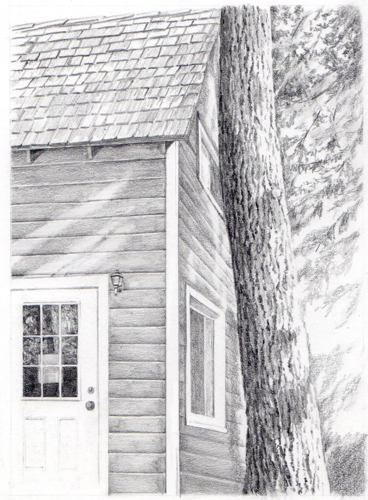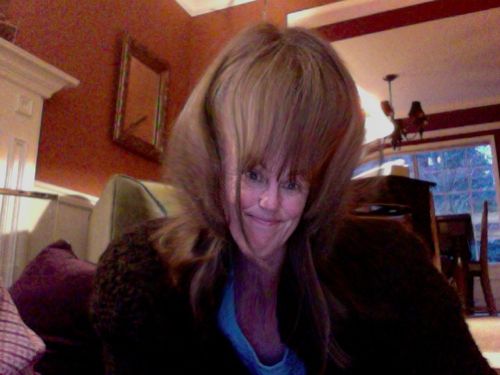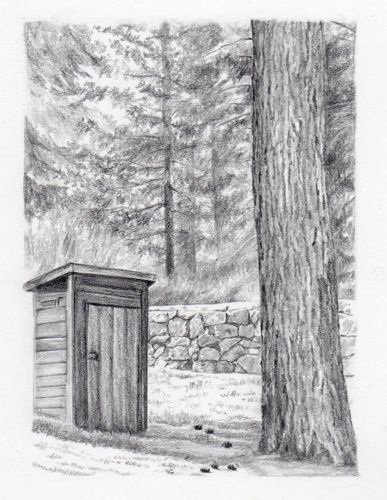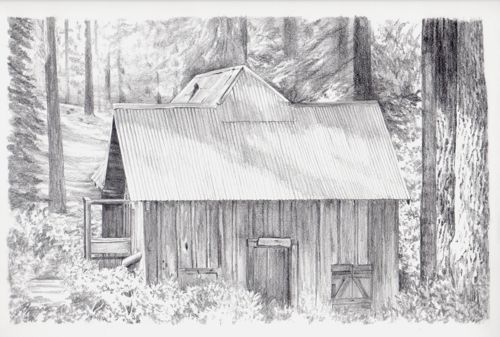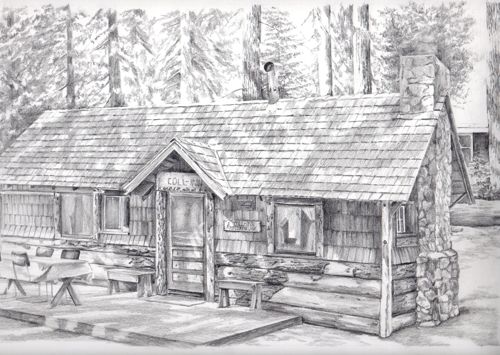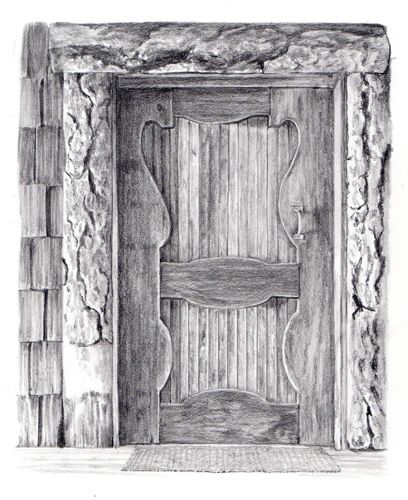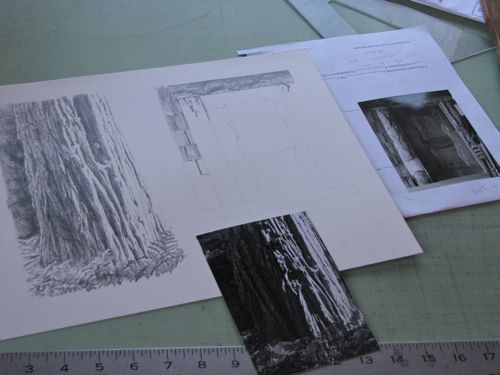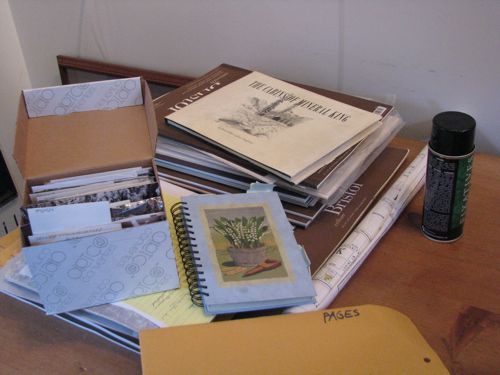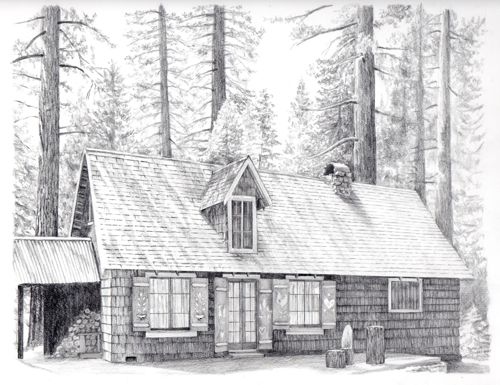I spent a very productive week at a cabin in Wilsonia, a private community within Kings Canyon National Park. The idea was to talk to lots of people, to learn and write down their stories, impressions, memories and thoughts on cabin life there. I was fairly certain that I had all the photos I needed and that the design of the book, The Cabins of Wilsonia, was almost cast in stone.

But. . .
. . . While there, I finally had the opportunity to work uninterrupted on the book. (When I’m in my own studio, there is so much painting to do that the non-urgent business of the book collects dust. I want to work on the book, I really really like working on the book, I wish I could just work on the book every day! Okay, I think you believe me now.)
Redesign: Each day I walked through Wilsonia with my camera and continued to photograph things for a second and third time. OF COURSE I kept finding new things to photograph.This meant I needed to re-evalutate which were the best choices for each street, and continually redesign each section.
Rebalance: I began to realize that there was an imbalance. How many pages have I allotted to each street? (called “Lanes” in Wilsonian) How many cabins are there on each Lane? Had I given the most populated streets the greatest number of pages? This took quite awhile to discern and then to redesign.
Quote Gathering: In addition to the photography and redesign, there were many conversations with people, which was the point of the visit. It is interesting that folks assume I am compiling the history of Wilsonia. Their first response to knowing that I’d like to include quotes from the cabin community is to give me a list of previous owners of their cabins!
This is most likely due to my own inept interviewing and inadequate explanations. I’m an artist, not O’Reilly. (It probably isn’t a good idea to bark at them, “This is a no-spin zone!”) I’m now realizing that gathering quotes will take a long time, lots of conversations, lots of getting to know people gradually. When Jane Coughran and I did The Cabins of Mineral King in 1998, we simply sent forms in the mail requesting stories, and magically, they got filled out and returned. Doesn’t work that way any more.
Eating an elephant: It is time to face the fact that this book is going to take at least 2 more years to get to publication.
That’s not the pathetic part. I’ll tell you that part tomorrow.
More tomorrow about my work week in Wilsonia. . .
